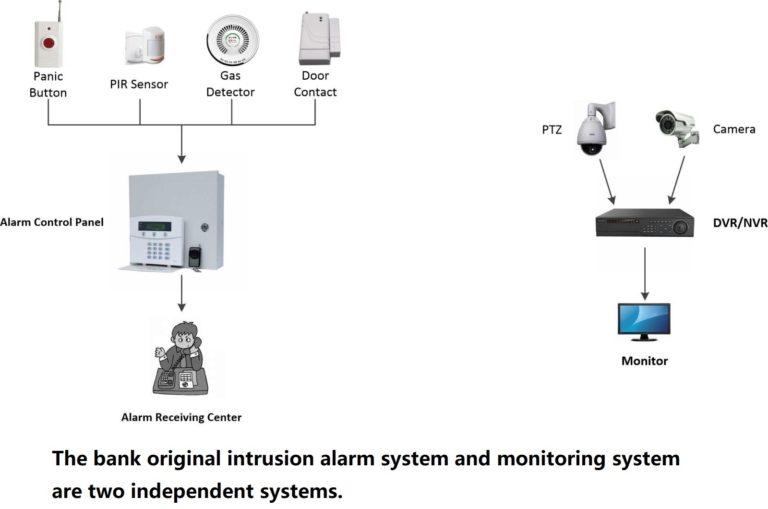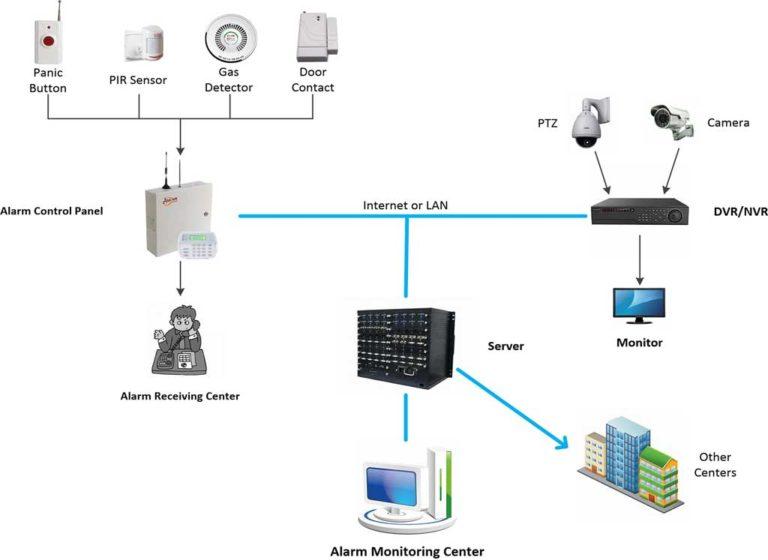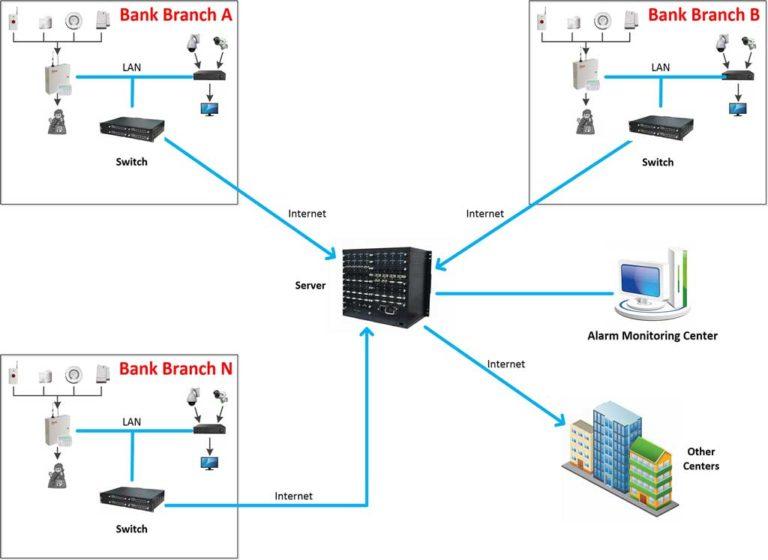



How to Improve the Bank Security System
1. Overview
To address security management challenges, banks have implemented multiple security solutions, including surveillance systems, intrusion alarms, fire detection, access control, intercoms, and public address systems. Among these, surveillance and intrusion alarm systems are fundamental in preventing unauthorized access and ensuring security. However, challenges such as false alarms, delayed response times, and lack of centralized monitoring hinder their effectiveness. This article explores strategies to enhance the accuracy, efficiency, and reliability of bank security systems through advanced technologies and best practices.

2. Challenges in Bank Alarm & Monitoring Systems
2.1 False Alarms and Response Delays
- Environmental factors, accidental triggers, and system malfunctions frequently cause false alarms.
- Security personnel must manually verify alerts via surveillance or on-site inspection, resulting in slow response times.
2.2 Lack of Centralized Monitoring
- Many bank branches operate standalone alarm and surveillance systems, preventing seamless security management.
- Headquarters cannot monitor multiple branches in real time, leading to inefficiencies in emergency response.
2.3 Limited Real-Time Communication
- ATM locations without 24/7 security personnel are vulnerable to undetected threats.
- Delayed cancellation of false alarms disrupts banking operations and diminishes customer confidence.
2.4 System Limitations
- Surveillance systems primarily record incidents but do not proactively prevent crimes.
- Intrusion alarm systems require physical confirmation, often resulting in reactive rather than proactive responses.
- Data loss due to storage failures can compromise security investigations.
3. Strategies for Enhancing Bank Security Systems
To address these challenges, banks should integrate various security technologies into a unified, network-based system that improves accuracy, efficiency, and response times.
3.1 Integration of Alarm & Surveillance Systems
- Real-Time Video Verification: When an alarm is triggered, the surveillance system automatically displays a live feed of the affected area, enabling instant verification.
- AI-Powered False Alarm Filtering: AI-driven motion detection and object recognition can distinguish genuine threats from false alarms, enhancing system accuracy.
3.2 Centralized Network Security Management
- Cloud-Based Monitoring: Connect all bank branches to a centralized cloud security platform for real-time monitoring and control.
- Remote Incident Response: The central security center can monitor and manage security alerts across all locations, allowing for immediate intervention.
- Automated Escalation to Law Enforcement: Critical alarms can be automatically forwarded to local authorities for swift action.
3.3 Advanced Surveillance Capabilities
- Redundant Video Storage: Implement cloud-based backups and edge computing to prevent loss of critical security footage.
- AI-Driven Behavior Analysis: Detect suspicious activities, such as loitering or tampering with ATMs, and trigger alerts before incidents occur.
- Two-Way Audio Communication: Enable remote voice interaction with intruders to deter criminal activity.
3.4 Strengthening Physical Security Measures
- Biometric Access Control: Use fingerprint and facial recognition for restricted access areas.
- Enhanced ATM Security:
• Install tamper-resistant enclosures and anti-skimming technology.
• Implement GPS tracking for cash-in-transit security.
3.5 Improved Incident Response & Crisis Management
- Automated Emergency Protocols: Deploy AI-powered decision-support systems that provide recommended actions based on alarm severity.
- Direct Law Enforcement Integration: Enable real-time alarm transmission to police for rapid intervention.
- Regular Security Drills: Conduct simulated threat scenarios to improve staff preparedness and response efficiency.

4. Advanced Features for an Optimized Bank Security System
A next-generation bank security system should incorporate cloud-based monitoring, AI-driven analytics, and multi-channel communication for optimal efficiency.
4.1 Enhanced Communication & Data Transmission
- Multi-Channel Alarm Transmission: Utilize TCP/IP, GPRS, and 4G to ensure uninterrupted security alerts.
- Redundant Communication Methods: Support multiple transmission channels to prevent signal failures.
- AI-Based Alarm Verification: Automatically filter false alarms before escalating incidents.
4.2 Real-Time Alarm & Surveillance Synchronization
- Live Video Pop-Up: Instantly display surveillance footage corresponding to triggered alarms.
- Automated Incident Recording: Securely store alarm-related footage separately for forensic analysis.
4.3 Cloud-Based Security Platform
- Remote Access & Mobile Alerts: Allow security teams to monitor incidents via mobile devices and respond instantly.
- Cybersecurity Measures: Implement multi-factor authentication, end-to-end encryption, and intrusion detection to safeguard against cyber threats.
4.4 Fire & Environmental Hazard Detection
- Integrated Fire & Gas Detection: Connect smoke, heat, and gas sensors to the security network for early hazard identification.
- Automated Fire Suppression Systems: Enable automatic activation of fire control measures upon hazard detection.

5. Conclusion
By integrating advanced intrusion alarms, AI-powered surveillance, cloud-based monitoring, and robust physical security measures, banks can build a highly efficient and proactive security system. These improvements help reduce false alarms, accelerate incident response, and strengthen overall security management, ensuring the safety of financial assets, employees, and customers. A modernized, AI-enhanced security strategy not only protects against current threats but also prepares financial institutions for evolving security challenges.
